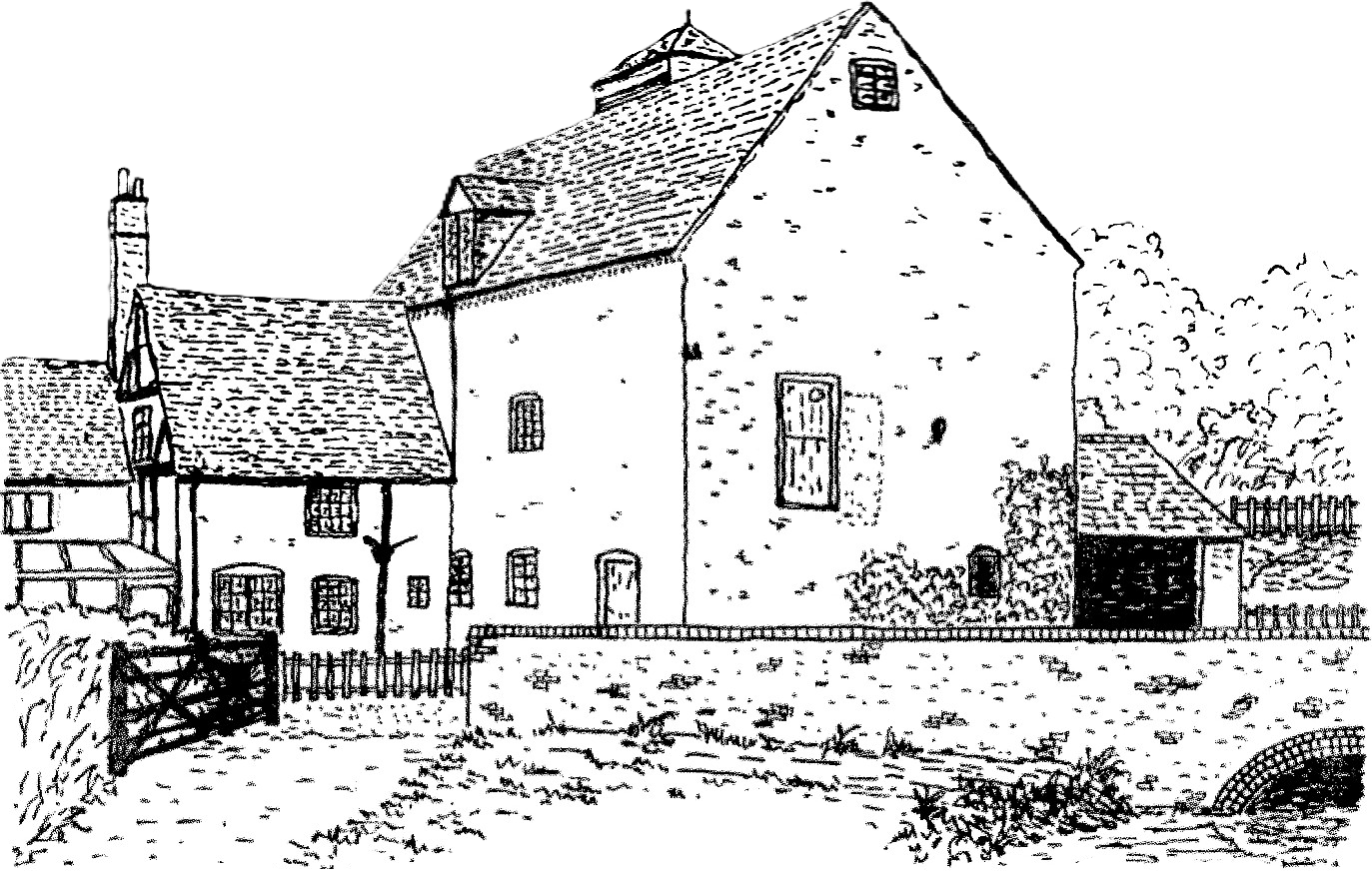New Hall Estate - the Mill in context
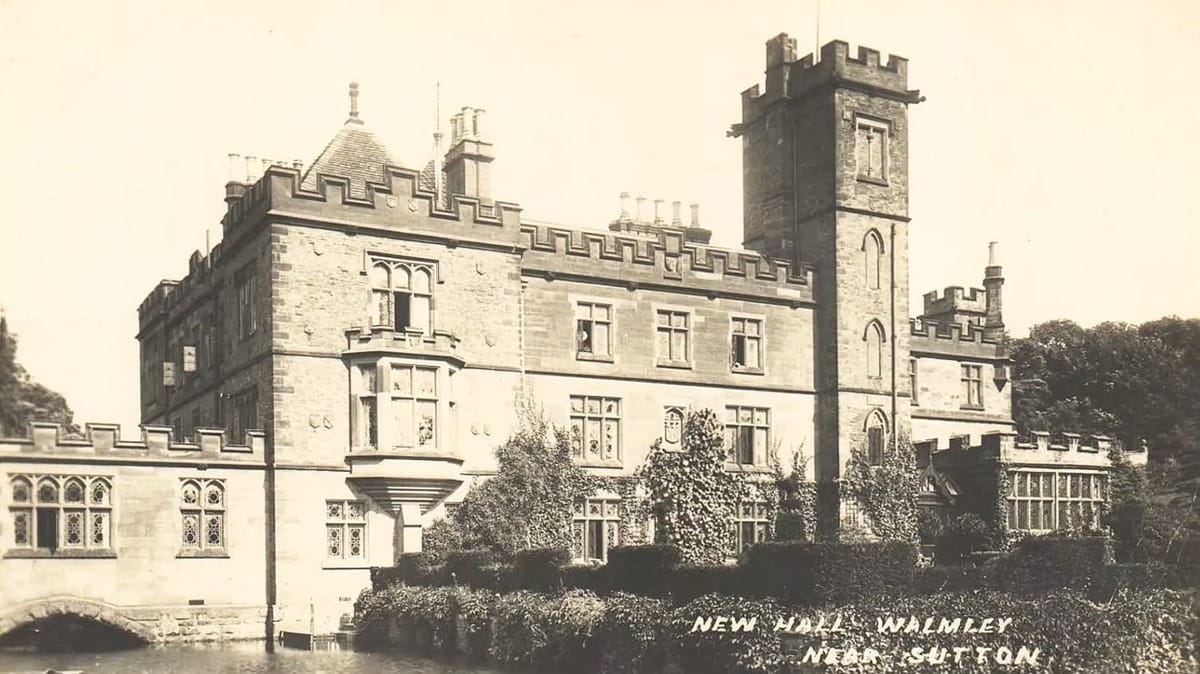
New Hall Mill is set in the former grounds of New Hall, said to be one of the oldest, if not the oldest, inhabited moated house in Britain. The moat which is so much a feature of the Hall, was formed in medieval times to provide protection. It is fed by seven nearby fresh water springs. To the rear of New Hall the water from the moat enters a stream which in turn is one of the sources of water for the mill.
The oldest surviving parts of New Hall, the grey-white stone south wing and part of the west wing, probably date from the 13th century, when it was a hunting lodge for the Earl of Warwick. It remained in the hands of the Earls of Warwick until the end of the Wars of the Roses in 1487, when the freehold of the manor was acquired from Anne, Countess of Warwick, by Henry VII.
In 1525, William Gibbons was the tenant at the Hall, and from 1542 his son, Thomas Gibbons, carried out various alterations and extensions, including building the banqueting hall, now called the grand chamber. It is probable that the first mill on the site of New Hall Mill was built for Thomas Gibbons. Thomas was a nephew of the Bishop of Exeter John Vesey, a friend of Henry VIII. Vesey founded Bishop Vesey's Grammar School in 1527. These lofty connections perhaps facilitated Thomas's purchase of the estate from the crown in 1552.
Thomas Gibbons died in 1586, and his son Thomas inherited the New Hall Estate. This Thomas did not live at New Hall, and he sold the estate to his brother William, who died shortly afterwards. Mary, his widow, lived on at New Hall until her death in 1608.
In 1610 (according to the Victoria County History, but said to be 1612 elsewhere), the Gibbons family conveyed the manor of New Hall and its watermill to Henry Sacheverell, commencing a new dynasty at the estate. Henry was a Roman Catholic. He extended and improved the house, and the Sacheverell coat-of-arms, crest, and motto, 'En bon foy' - in good faith, can be seen throughout the old part of the house. When Henry Sacheverell died in 1620, New Hall passed to his son Valens, and thence to Valens's eldest son, George. Despite marrying twice, George Sacheverell died without children in 1715 and he bequeathed the estate to his great nephew, Charles Chadwick. Under the terms of George's will Charles was required to add Sacheverall to his name, so he became Charles Sacheverall Chadwick. It seems that money was an issue, so in 1739, perhaps to finance his forthcoming marriage, Charles mortgaged the estate to Francis Horton of Wolverhampton.
On Charles's death in 1779 New Hall passed to his sister Dorothy. She died a spinster in 1784, and bequeathed the manor to another Charles Chadwick, the son of her half-brother John. His son, Hugo Mavesyn Chadwick, inherited the estate in 1829. In 1854, Hugo left the estate to his son, John de Heley Mavesyn Chadwick, who was born in Bath in December 1834, and was privately baptised in 1835 in Bathwick. He was officially brought into the Church in Sutton Coldfield in 1852.
The 1861 census records the residents of the hall as John D (for de Heley) Chadwick, aged 26, a landed proprietor of Bath, his wife Clara, aged 20, born in Agra in India, their two infant children, some visitors, and eleven servants. The Chadwicks went on the have six children in all. In 1870, they enlarged the north wing and built up the central tower.
In 1871 the family were still at New Hall, John, Clara, and five children: Hugo, Clara, Charles, Elizabeth and John de Heley Mavesyn Chadwick junior, aged 4.
(Some sources give John's name as John Charles Chadwick, but he is John de Heley Mavesyn Chadwick in all official documents).
John's family were the last of the Chadwicks to live at New Hall, but his family did not spend the rest of their lives there. In 1881 they sold off some of New Hall's contents, and they vacated the Hall, moving to Brighton in 1882. John was declared bankrupt in 1883.
In about 1885 the Hall was turned into a school called New Hall College, catering for boys destined for professional or commercial careers. The school began with about 14 pupils but expanded later to about 70. The first Principal was Frederick W W Howell. Frederick was a Fellow of the Royal Geographic Society, and had recently become noted for his explorations in Norway. In 1891, he resigned from the school, citing health reasons (according to a newspaper article about one of his lectures), but he showed no sign of slowing down. He continued exploring in Iceland, lecturing on his experiences, and eventually began to lead tours to Iceland. He tragically drowned whilst crossing a river when he was leading a tour in Iceland in July 1901.
A father and son, both named Thomas Everard Healey, took over the running of the school in 1891. Thomas senior was the son of a shoemaker from Northamptonshire. He and his wife Emily were both experienced school principals. Initially they ran a school for girls called Argyle House in Notting Hill. In 1872 they moved to a boys' school, Rockall House in Long Buckby, where Thomas became the Principal. Thomas was also a deacon at the Baptist Church, which must have pleased Emily, as her father was a Baptist minister. In 1876 the couple moved to Margate. Emily became joint proprietor of Montrose House, a boarding school for girls, and Thomas became a long-term 'visiting master'. Emily's business partner, Mrs Sutton, left the same year, leaving the Healeys in charge.
By 1888 Thomas had taken on an additional school for boys, Cliftonville College, Addington Square, Margate. Sadly, Emily died in 1889, but Thomas continued teaching and soon remarried. In 1888, his son Thomas junior graduated from London University. Father and son were both teaching at Addington Square when the census was compiled in 1891. Thomas junior was now 24 years old and of an age to take on his own school, under his father's wing. He accepted the role of Junior Principal at New Hall College, and it seems likely that Thomas senior was employed as Principal simply as a nominal figurehead, since he retained his position in Margate. Adverts appeared bearing the following names of the staff from July 1891:
Principals :
- MR T EVERARD HEALEY
- MR T EVERARD HEALEY, B.A. (Lond.)
Staff:
- MR KIRKPATRICK, B.A.
- MR BLACKHURST (Lond.)
- MR CHAPMAN
- REV E C CAMMIDGE
- French : Mons Degenetais
- Music : Mr J R Reeve (Organist of St Thomas', Balsall Heath)
- Shorthand: Mr Durant
- Drill: Sargt Webb
- Carpentry: Mr Ison.
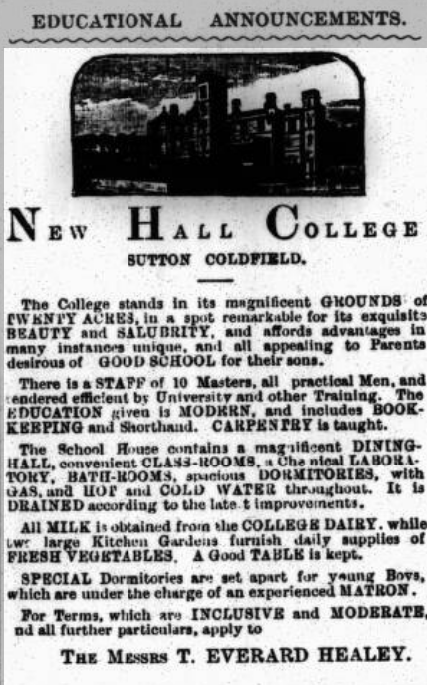

In 1897, John de Heley Mavesyn Chadwick died in Brighton, but New Hall College continued operating until 1902. However, Thomas Everard Healey junior was not as committed to teaching as his father. In 1897 he was ordained as a priest and left New Hall.
In 1897 a new head was appointed: 31 year old Albert Hastings-Jones of London University, formerly English Master at the German School, Antwerp, and Assistant Master in the Mercer's Company's School, London. 'Little boys' were under the care of Albert's sister, 26 year old Eleanor Victoria Hastings-Jones, LLA. The last advert to attract students was published in January 1902. It is possible that the school had run into financial difficulties.
Lt. Colonel Walter Wilkinson, formerly of Lichfield, announced his purchase of the estate in October 1902. He was born in Leeds in about 1849. In 1911 the census at New Hall recorded that he and his wife Emily Adelaide Wilkinson lived at the Hall with their six servants. Along with his two brothers, Howard and Harry, Walter was a Director of Wilkinson and Riddell, a drapers' warehouse based in Cherry Street, Birmingham, which was started by his father. According to the 1911 and 1921 censuses, Walter was responsible for the Manchester warehouse of Wilkinson and Riddell. He seems to have been a unassuming man, and a generous supporter of the Birmingham Eye Hospital. Walter died in September 1922, from heart failure after an operation for appendicitis, leaving a widow, but no children. Emily, his widow, died the following year, on 9 Jun 1923.
Walter had been close to his nephews and nieces, and was grooming his nephew Captain John Henry Warburton Wilkinson (the son of John and Margaret) to be his heir, but John died of wounds in the 1st World War, aged 23, on 5th May 1917.
As the Wilkinsons had left no direct heirs, their executors put the Hall and Home Farm (later New Hall Dairy Farm) up for auction on 31st July 1923. The Kenilworth Advertiser reported on 4 August 1923:
THE OLDEST INHABITED HOUSE. HISTORIC BUILDING WITHDRAWN AT £5,500. The New Hall Estate, Sutton Coldfield, was offered for sale at the Grand Hotel, Birmingham, on Tuesday, by Messrs William Fowler, Bewlay, and Company, on the instructions of the executors of the late Mr Walter Wilkinson. Reputed to be the oldest inhabited house in the country, the New Hall, a residence built in the year 1200, and surrounded by picturesque grounds with an area of over 36 acres, was withdrawn. The building is full of historic interest, most of the windows being those originally fixed by the thirteenth century builder. The old oak iron-studded door, original hinges, bolts, and locks are fine examples of early English craftsmanship. The bidding commenced at £4,000, and the property was withdrawn at £5,500.
Although they were withdrawn from the auction unsold (probably failing to meet the reserve) they were subsequently sold by private treaty (probably to the highest bidder). The purchaser was the engineer Alfred Ernest Owen. Born in 1869, he was the son of Alfred Owen of Wrexham, who ran a successful ironmongers business in the town. Alfred Ernest had been a premium engineering apprentice at Messrs Taylor's Engineering Works, Sandycroft, Chester.
In 1893 Alfred responded to an advert by John T and Tom W Rubery, two brothers running a Darlaston based engineering company, Rubery and Co. Tom was leaving the business and John was seeking a new partner. Alfred's new position was announced to business associates on 4th July 1893.
Alfred married Florence Lucy Beech on 27th June 1900.
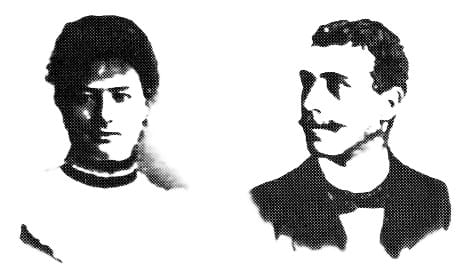
As Alfred's role in the company grew, this prompted a change of name to Rubery Owen & Co in 1905. He became the sole proprietor of Rubery Owen & Co in 1910, on the retirement of John Rubery, who sold his interest in the business to Alfred. At that time Rubery Owen were manufacturers of bridges, roofing, motor frames, fencing, and general iron and steel work. In 1912, ever looking for new business opportunities, they expanded into aviation engineering.
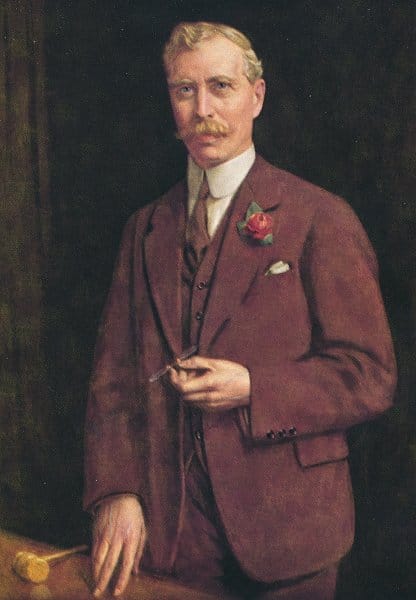
Alfred's purchase of New Hall began the Owen dynasty's phase of its history - it may not have lasted as long as the Warwicks, the Sacheverells, or the Chadwicks - but nevertheless it was to persist for over a century, and their involvement still continues today.
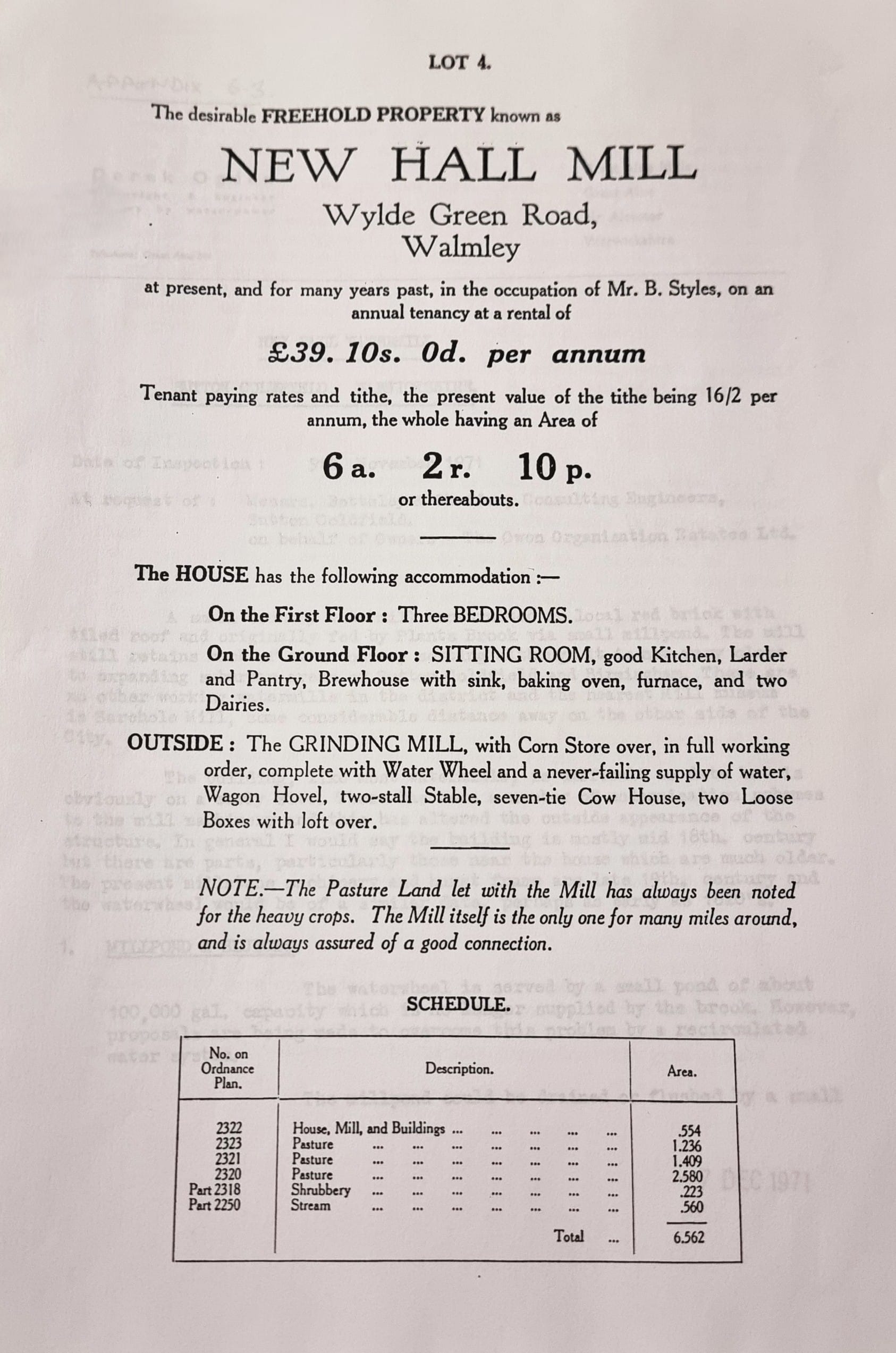
In 1923 the watermill had been marketed separately from the house, and the miller Benjamin Styles had bought it for himself.
Shortly after his two purchases (New Hall and Home Farm), Alfred Ernest Owen had an operation for a duodenal ulcer. To all appearances the operation was successful, and he returned to full time work. In 1928, he bought the mill back into the estate, a symbol of his commitment to the future of the estate and all its component parts, a policy the family was to follow for the next few decades, buying back other parts of the Estate whenever the opportunity presented itself. However, towards the end of 1929, Alfred Ernest Owen was suddenly taken ill after attending an Ex-Serviceman's Supper at the works. This time his condition proved so serious that another operation was out of the question. He died on 30th December 1929, aged 60 years.
By then Rubery Owen was a substantial engineering firm with a turnover of some £580,000 per annum and a workforce of approximately 1750. The company was a successful producer of components for the motor and aviation industries and of structural steel for the building trade. Under the terms of his will, Alfred Ernest Owen had the foresight to direct that Rubery Owen should be turned into a private limited company, which happened in 1935.
Alfred's widow, Florence, was given a life tenancy of New Hall. She became the matriarch of the family, and the Patron of many of Rubery Owen's clubs and societies.
Each of the three children inherited one third of the shares. The eldest, Alfred George Beech Owen, only 21 years old, was three years into a degree in mechanical sciences at Cambridge. However, after a family conference it was decided that he should leave without completing his degree. He thus succeeded his father as Chairman of Rubery Owen and managing director.
Alfred's younger brother, Ernest William Beech Owen, was only 19 years old. He had been educated as an engineer and draughtsman at Loughborough College. He was appointed joint managing director, but for a time he pursued his own interests as a draughtsman in the motor industry and in other roles (according to Grace's Guide). Their sister, Jean, owned the final third of the business.
Alfred married Eileen Kathleen Genevieve McMullan in 1932. He and his family lived at The Highway, a newly built house, alongside the driveway to New Hall. Alfred and Eileen had five children: Helen Grace Owen in 1934, Alfred David Owen in 1936, John Ernest Owen in 1939, Jean Elizabeth Owen in 1942, and Robert James (Jim) Owen in 1949. The children grew up roaming New Hall's grounds, and going down the drive often to visit their grandmother at New Hall. They developed a great fondness and loyalty to this extraordinary historic building and its grounds.
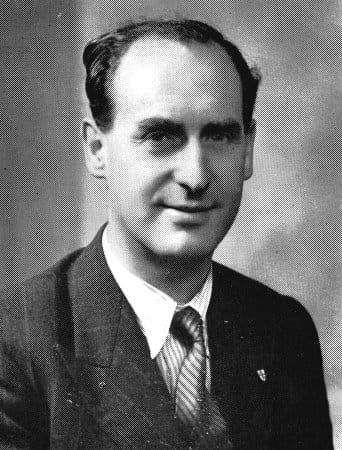
Alfred was made an OBE in 1946. In 1949, New Hall was given a Grade I listing. The listing gives the following information, with the source given as the Victoria County History, IV, pp 231-233.
"Medieval C13 or C14 L plan house with matching L plan wing added late C16. Single storey bay window of wing has date 1590 and initials HS for Henry Sacheverell. Early C17 back addition heightened to form tower in Early English style, embattled and with date 1796, initials IC for John Chadwick. Coursed rubble and ashlar, gabled tiled roofs partly castellated. Lattice casement windows, some with pointed arched lights, mullions and transoms. Mainly 2 storeys and attics. Surrounded by moat. Restored, Gothicised and enlarged 1869 (date on gable to right of entrance). Interior retains medieval hall; late C16 banqueting hall, panelled and with ornate ceiling; early newel staircase with carved heraldic beasts. Home of Sacheverell family in C17.
Alfred was made a CBE in 1954, and the same year, the family decided to transfer New Hall and the Estate to Rubery Owen because of rising costs.
From 1955 to 1962 Alfred was Chairman of Staffordshire County Council, as well as Chairman of Rubery Owen. His brother, Ernest William Beech Owen, was still Joint Managing Director of Rubery Owen. Their sister, Helen Jean Beech Owen, was married to her second husband, the author Louis Stanley.
When Florence Owen died in 1958, New Hall underwent major restoration.
Rubery Owen was a major manufacturer and supplier to the UK motor industry, and some links exist to this day. On 16th December 1959, a group of motoring enthusiasts working for Rubery Owen in Darlaston started the Owen Organisation Motoring Club, which now continues as the Owen Motoring Club. For a good number of years the Club has attended at least one of the Mill's Open Days each year.
Sir Alfred was appointed Knight Bachelor in 1961 for services to local government. In 1964, New Hall became Sir Alfred's family home.
In 1965 a new holding company was formed and Rubery Owen Holdings Ltd took over responsibilities for the Sutton Coldfield properties, including the Mill.
On 25th February 1967, Alfred's brother Ernest William Beech Owen died, aged 56. He was Joint Managing Director of Rubery Owen, and having worked extensively in the agricultural and earth moving equipment manufacturing industries, he was President Elect of the Agricultural Engineers' Association.
Sir Alfred suffered a major stroke in 1969, but on his recovery he strongly advocated for the restoration of New Hall Mill, and at his instigation, from 1970 onwards, efforts were made to restore the machinery and waterwheel to working order. A charity, the New Hall Water Mill Preservation Trust, was registered on 26 February 1973, with the express purpose of preserving the Mill. Unfortunately, Sir Alfred was not well enough to become a Trustee.
Charitable objects: THE PROMOTION OF THE PERMANENT PRESERVATION FOR THE BENEFIT OF THE PUBLIC OF THE MILL AND IN FURTHERANCE OF SUCH OBJECT BUT NOT OTHERWISE TO RESTORE THE STRUCTURE AND THE MACHINERY OF THE MILL AND PUT THE SAME INTO GOOD AND SUBSTANTIAL REPAIR AND WORKING ORDER.
In December 1973 the Mill was Grade 2* Listed. The listing states:
C18. Red brick house with tiled roof. 2 storeys, casement windows. A lower wing has remains of timber framing. Mill machinery, including water wheel, in course of restoration.
In August 1976 some ancillary buildings to the Hall were Grade 2 Listed, including its chapel, a gardener's cottage, a former coach house and stables, and the east drive gate piers.
Sir Alfred died on 29 October 1975 aged 67. His children were now grown up, and it was time to reconsider the future of New Hall. Rubery Owen Holdings spent several years looking at the options, including offering it to the National Trust, but eventually it was put up for sale. Michael Blakemore, a Midlands businessman, was the last individual to make his home at New Hall. He sold the property to Thistle Hotels in 1985 and it was converted to a hotel in 1988 by Ian Hannah and Ken Arkley. It has been owned and operated by Hand Picked Hotels since 2008.
The Mill and its meadow field remained in the private ownership of Rubery Owen Holdings Ltd, standing like a bastion to Alfred Owen's memory. The mill continued in occasional operation under the miller Ben Davis, until his death in 1993, when all commercial milling ceased.
A new regime was needed to take the Mill forward to the 21st century. It would be managed by the New Hall Water Mill Preservation Trust, and maintained by the Friends of New Hall Mill. Over the next three years, the New Hall Mill Preservation Trust prepared the mill for opening to visitors, and in 1996 the mill opened its doors to the public for the first time.
Over the years, some of the estate lands were given over to private housing developments, but about 80 hectares of former farmland, designated as green-belt land, were still retained by Rubery Owen. With members of the Owen family feeling a deep connection to the family's and their own roots in the local landscape, the opening of New Hall Valley Country Park on the August Bank Holiday of 2005 was a particularly meaningful legacy to the local community.
Sir Alfred George Beech Owen's youngest son, Robert James, known as Jim, and Sir Alfred's grandson Nicholas Owen, son of Alfred David Owen, still both retain a strong practical involvement with New Hall Mill.
If you'd like to read more about the history of New Hall, a book is available to buy from our Gift Shop on Open Days.
Note: written by Sheridan Parsons with contributions from Jim Owen. Further additions and corrections may be made over coming weeks.
